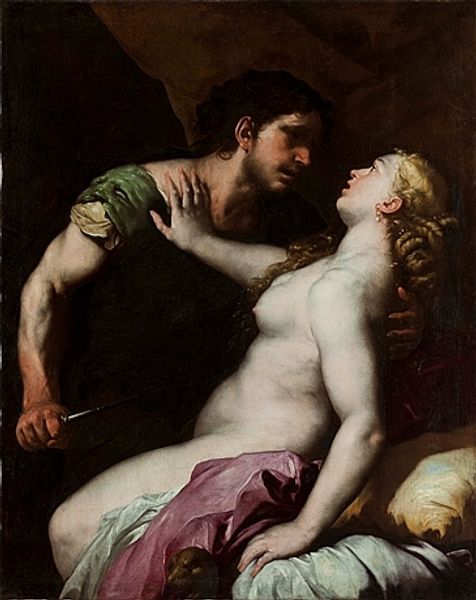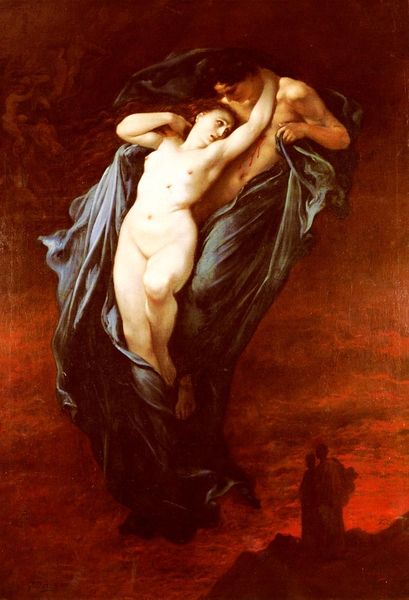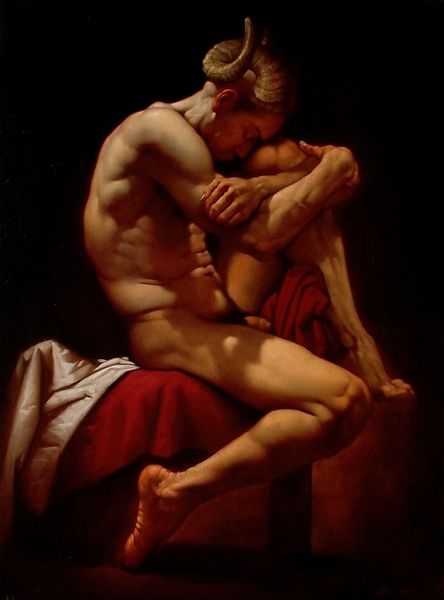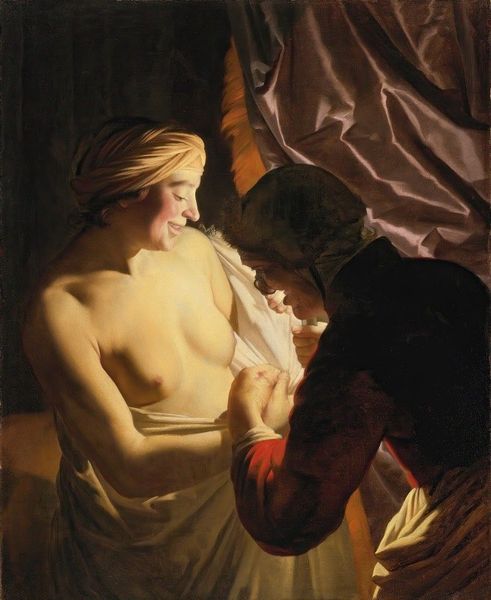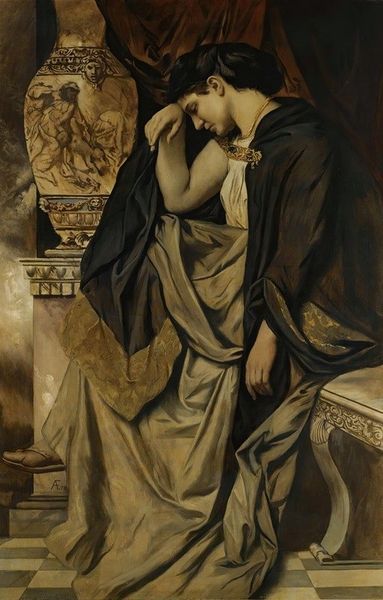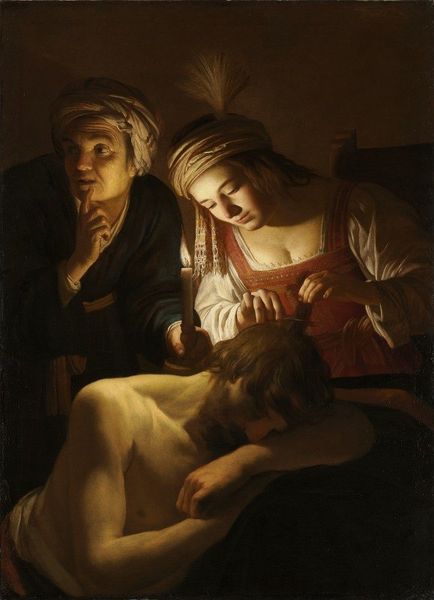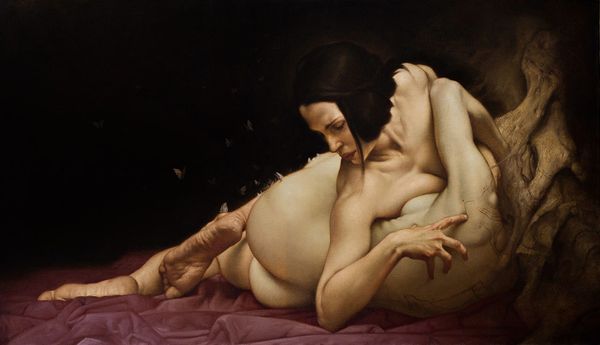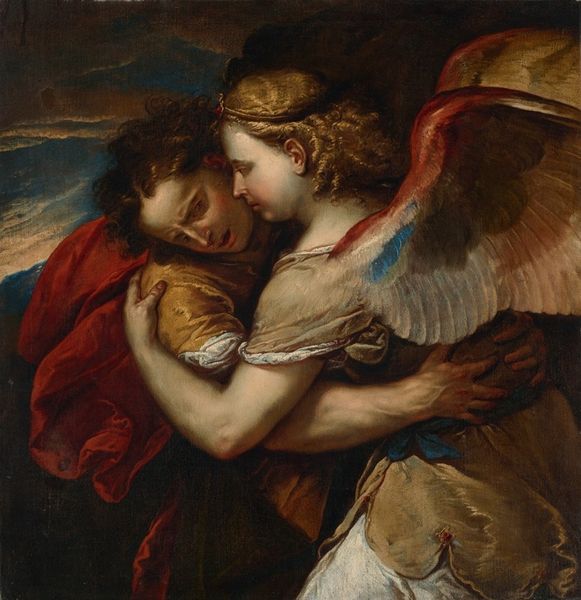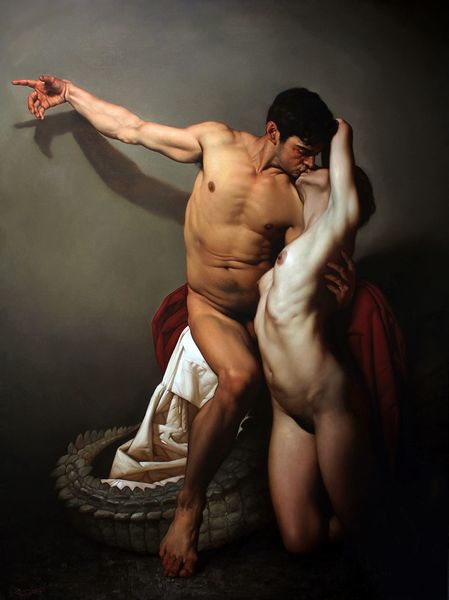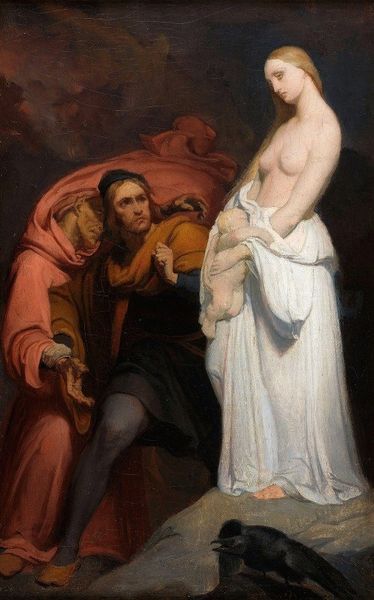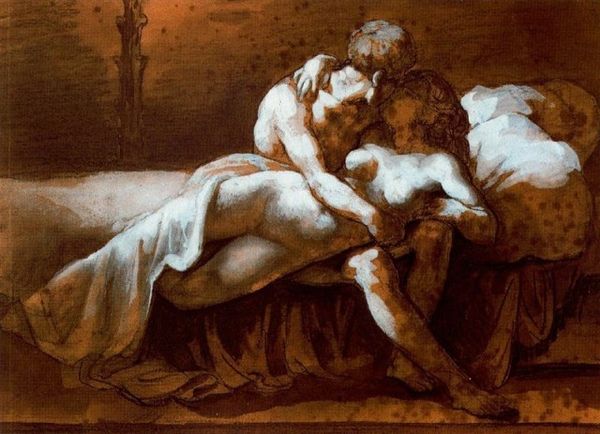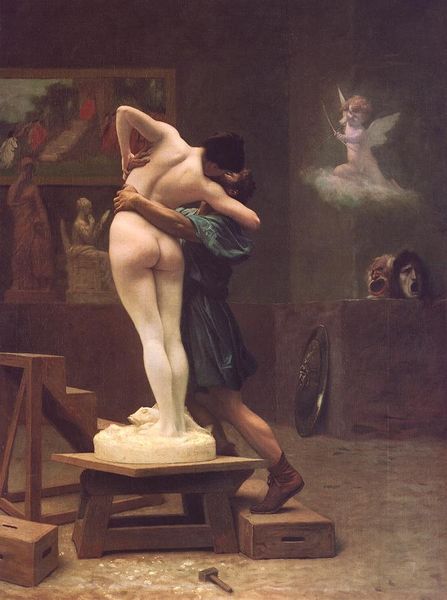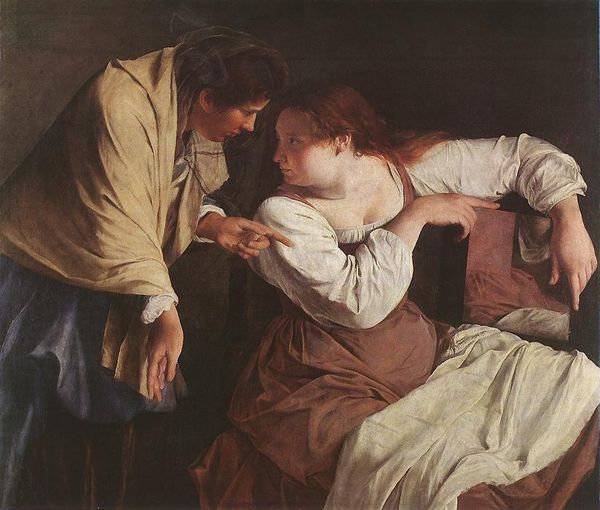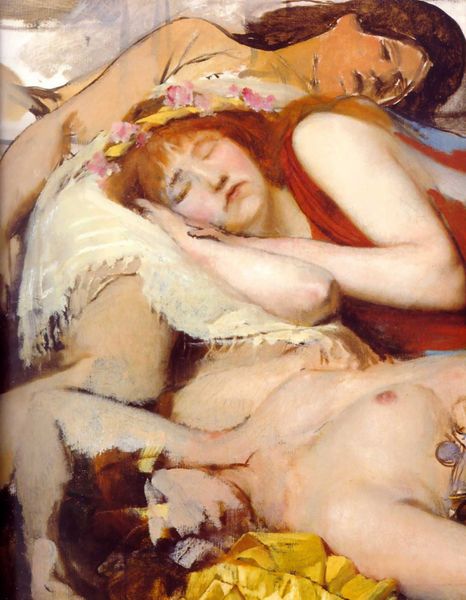
Copyright: Public Domain: Artvee
Curator: Let’s turn our attention to Frederic Leighton's painting, "Orpheus and Eurydice," created in 1864 using oil on canvas. It's a depiction of a pivotal moment in their tragic love story. What strikes you first about it? Editor: The somber tone really jumps out. The dark background, the muted colours—it feels heavy, doesn’t it? Almost suffocating. Their embrace, which should convey reunion, seems burdened with impending doom. Curator: Indeed. Considering the moment depicted – Orpheus leading Eurydice from the Underworld, with the single condition that he must not look back until they’ve both reached the sunlight – we must remember it foreshadows profound loss driven by a tragic transgression. Editor: The way Orpheus clutches his lyre adds another layer. That instrument is so symbolic. It represents not just his art, but his power to charm even the gods of the Underworld. It’s usually seen as a symbol of triumph. Yet here, it appears almost like a cumbersome burden rather than his key to victory. Curator: Absolutely. Leighton deliberately employs established artistic conventions to convey layers of meaning. Look at the positioning of Orpheus and Eurydice. Her clinging embrace can be seen as indicative of dependence and weakness—reinforcing the tragic dimension of her fate. The painting is undeniably embedded in Victorian patriarchal frameworks. Editor: That contrast between light and dark is so evocative. The dim light barely illuminating their figures suggests hope flickering amidst despair. White color, covering Eurydice dress is, maybe, a way to show her "incorporeality," but it also works to make her body highlighted in contrast to black clothes, that could suggest dark power. Do you think is possible to consider it as a gendered color mapping in the Victorian age? Curator: Most certainly. Colour played a very central role to indicate symbolic and aesthetic distinction. This is one of the crucial element in decoding how a work such as Leighton’s might reveal the prevailing Victorian views on women, agency, and death. It’s a fascinatingly complex painting that continues to provoke. Editor: Absolutely. There’s so much to unpack, even in what seems like a simple portrayal of a well-known myth. Curator: I find myself continually drawn back to consider these layered perspectives as they challenge and inform a continuous re-reading of Leighton’s work.
Comments
No comments
Be the first to comment and join the conversation on the ultimate creative platform.
